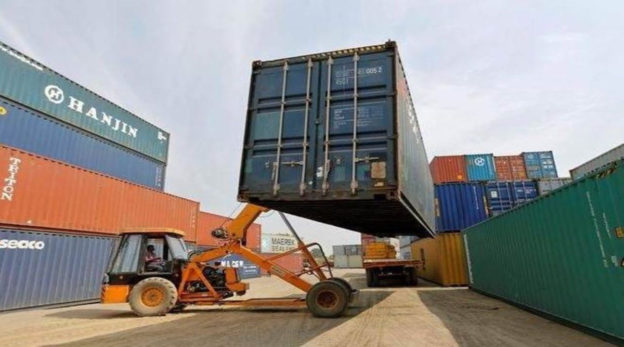In sharp contrast, China has notched up 1.6-times larger trade volumes of $62 billion in 2021 in the region according to UN trade statistics.
At a time adverse headwinds are buffeting global trade, India must step up its engagement with the neighbourhood.
South Asia has unfortunately been a diminishing priority focus for India, accounting for $40 billion or 3.8% of its global trade in FY22. In sharp contrast, China has notched up 1.6-times larger trade volumes of $62 billion in 2021 in the region according to UN trade statistics. That the dragon trades more with Bangladesh, Sri Lanka and of course Pakistan is a painful reminder to India of its failure to deepen regional integration. But there is a vast upside potential in this regard as trade within South Asia is one of the lowest in the world.
India’s diminishing interest, if not influence, in the region is a consequence in large part due to its tensions with Pakistan. Islamabad has for long denied most-favoured-nation status to India’s goods. India, too, withdrew MFN status to Pakistan in February 2019 after the Pulwama terror attacks. MFN status ensures non-discriminatory trade between partner countries. Due to its long-standing problems with Pakistan, India has increasingly preferred regional groupings like BIMSTEC than SAARC.
Most neighbours also resent India’s dominance, which has only deepened as they have registered huge trade deficits totalling $29 billion in FY22. India must engage more strongly with South Asia as most nations are facing balance of payments problems with reduced foreign exchange buffers to purchase essential imports like food, fuel and other items.
As many as four of them have approached the IMF for assistance, the latest being Bangladesh to cope with the mounting pressure on their economies. India has so far extended $3.5 billion to crisis-ridden Sri Lanka.As Nepal has restricted non-essential imports, India’s exports have declined by 13.2% during April-May this fiscal. Generous lines of credit – or soft loans provided on concessional interest rates–enable neighbours to meet their requirements.
India has so far extended 37 lines of credit (LoCs) worth $14.27 billion covering 162 development projects to five South Asian neighbours. Nepal is getting the maximum number of LoCs, followed by Myanmar, Bangladesh, Sri Lanka and Maldives. These projects are mostly for building roads, bridges, waterways etc like the Greater Male Connectivity, water and sewerage and Addu development projects in the Maldives.
The most recent trade-related LoCs are only for Sri Lanka to access fuel and fertiliser supplies. There is a warrant to step up similar assistance to others as well so that they can be supplied with essential goods, including food and fuel, from India.
In this regard, the recent uptick in trade with Pakistan is definitely a favourable augury. Despite Islamabad’s ban on trade with India, it more than doubled its imports during April-May this fiscal from India of sugar and sugar confectionery, organic chemicals and pharma products. Pakistan like many other neighbours is short of foreign exchange for importing essentials. There is no reason why India cannot significantly increase its imports from that country beyond items like dates. Due to bilateral frictions, India’s trade with Pakistan dwindled to $516 million in FY22 while our two-way trade with Bangladesh is 35-times larger at $18 billion.
India cannot address the unfinished agenda of South Asian integration without Pakistan. BIMSTEC might be SAARC without Pakistan. However, despite the chill in the relationship, there are interdependencies between India and Pakistan that must be seized on the trade front.
Otherwise there will be a huge loss in potential opportunities, contrary to economic theory which states that neighbouring countries often tend to trade more with each other. Economists use gravity models, potential trade approaches and other techniques to estimate trade possibilities. According to these models, two-way Indo-Pak trade has been pegged at a whopping $37 billion according to the World Bank and the Delhi-based think-tank ICRIER although the political-economy suggests a more dismal prospect!
To re-engage with the region, India must follow up with unilateral trade liberalisation that ensures greater market access for the goods of its neighbours. Doing so will blunt the edge of some of their resentment of only registering massive trade deficits as they begin to acquire a greater stake in the opportunities provided by India’s fast-growing economy. The alacrity with which India is inking free trade agreements with UAE, Australia and major developed nations in the coming months must also extend to FTAs with Bangladesh and other neighbours.
To be sure, India is belatedly defending its fast-diminishing sphere of influence in South Asia by improving connectivity through road, rail and waterways with Bangladesh and Nepal that will boost cross-border commerce manifold.
Settlement of trade transactions in the currencies of trading partners would also be a game-changer as many neighbours are desperately short of foreign exchange. Together with lines of credit and other assistance, all of this could clear the decks for India to trade more with neighbours than it is currently doing.
https://www.financialexpress.com/economy/india-must-step-up-trade-engagement-with-neighbours/2611410/





